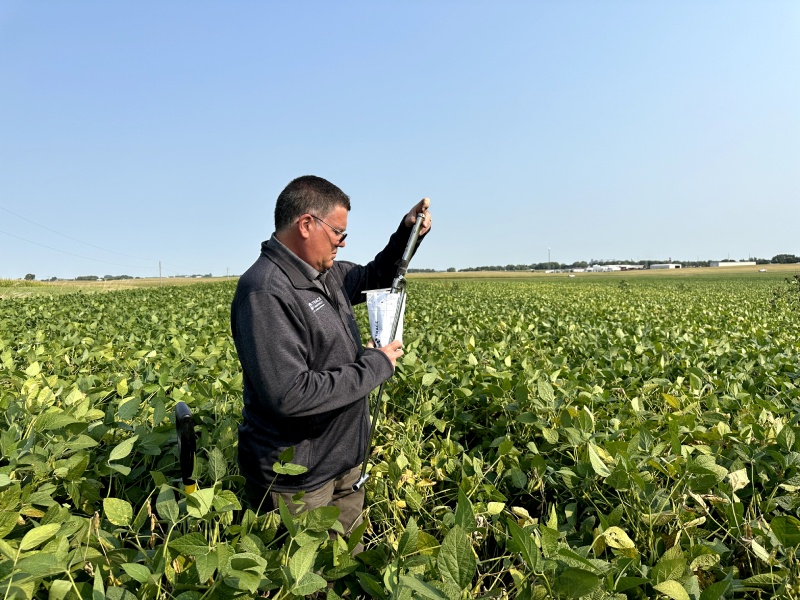Oil’s Well That Ends Well: Choosing the Right Lubricant for a Microbiome-Friendly Probe
When fall brings wet, sticky soils, what can you do to make soil sampling easier? Aside from calling a sampling service, you could employ the use of a coring probe lubricant. These lubricants improve the ability of the probe to go into the ground and to easily release an intact core after pulling it up.

However when it comes to biological soil testing, not all probe lubricants are created equal. At Trace Genomics, we evaluate all the DNA in the soil to report pests, pathogens, and nutrient cycling functions to better inform your agronomic decisions. In order to have the most accurate analysis, we want your soil microbiome to stay the same from the time you pull it out of the ground until it arrives at The Trace Laboratory in Ames. (This is why we ask you to send in your sample as soon as possible after collection!)
There are several factors that could cause your soil microbiome to change. Remember that the microbiome is made up of living organisms. It’s possible that certain microbes in that soil will start growing (or dying) disproportionately, so by the time they’re analyzed, it looks like there are a lot more (or a lot less) of them in your soil than what are actually there. Storage time and temperature are a big concern (you can read more about those here), as well as coring probe lubricants. These lubricants can impact the biology of your soil sample if it either: A) contains something that would kill certain microbes in your soil, or B) contains a carbon source (food) that a certain group of microbes really likes.
Microbiome scientists have evaluated the impact of coring probe lubricants on microbial communities, and they’ve found that at the depths we’re looking at (< 24” or 30 cm), WD-40 and cooking oil can be used as lubricants, while silicone oil and mold stripper should be avoided (1). To be safe, Trace scientists recommend only using a probe lubricant if it’s necessary to collect the sample.
Summary:
Avoid the use of probe lubricants unless it’s necessary for extracting soil cores. If you must use a lubricant, either WD-40 or cooking oil spray are the safest and have a negligible impact on the microbial community analysis.
REFERENCES
- Polain, Katherine, et al. “Coring Lubricants Can Increase Soil Microbial Activity in Vertisols.” Journal of Microbiological Methods, no. 165, Oct. 2019, p. 105695, https://doi.org/10.1016/j.mimet.2019.105695. Accessed 4 Apr. 2022.
About the author: Dr. Tuesday Simmons is the Science Communication Manager at Trace Genomics. She earned her Ph.D. in Microbiology from the University of California, Berkeley, studying the root microbiome of cereal crops.



